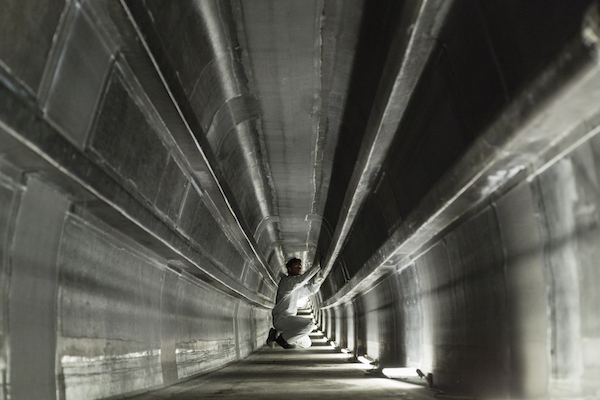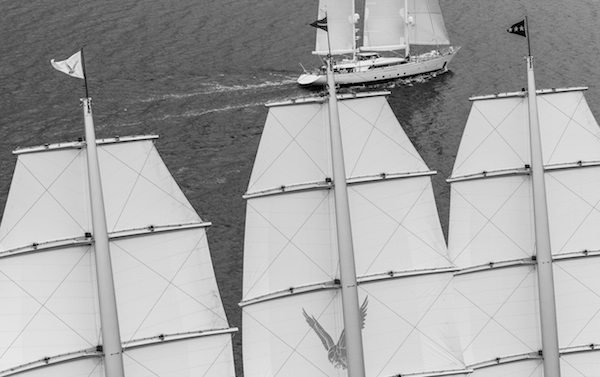Pushing the limits
The sailing yacht industry uses innovative designs in order to develop lighter and bigger carbon rigs. But alongside this development, a bigger focus on the safety implications of building and operating such complex structures has emerged.…
With a 140m-plus project at Nobiskrug, 141m project at Dream Ship Victory and a 107m project at Oceanco, the last decade has seen the sailing yacht industry increasingly use innovative designs in order to develop lighter, faster and bigger carbon yachts and rigs. Driving this innovation are the owners and their desire to reach higher speeds and greater sizes. But alongside this development, a bigger focus on the safety implications of building and operating such complex structures has emerged.
Rig engineering by Damon Roberts, Magma Structures.
Richard Lott, CEO of Southern Spars, explains that safety is the absolute starting point of every decision the manufacturer makes. “A carbon mast is tall, relatively heavy and suspended above the heads of those who commission our product and their guests – their safety is paramount,” he says. “In our view, as you increase in size, safety becomes more and more critical. As the size of masts increases, so too does the potential fall-out from a failure.”
Composite specialist Magma Structures has recently delivered the world’s tallest carbon composite freestanding masts for sailing yacht A, and as a result the company is well aware of the safety implications of increasingly complex rigs. Damon Roberts, technical advisor, advises that there are two key aspects to consider: safety during normal operations and safety when things go wrong.
“On the first point, larger vessels need more sail area to drive them,” Roberts explains. “Extrapolating existing designs leads to larger sails and larger loads, but this isn’t a linear relationship because as vessels get larger, their displacement goes up as a function of length cubed. The sail area would naturally go up as a squared function of the rig, so it becomes even more difficult to add in sufficient sail as the boat length increases. The loads in every element go up. It is these increasingly high loads that create safety issues during normal operations.”
“Owners have fun competing in regattas like St Barths and a modern high-performance rig makes the yacht more fun to sail."
When things go wrong, however, Clive Johnson, Magma Structures’ managing director, explains that the consequences are much more serious due to the size and weight of the components used. “It’s a very different situation when trying to deal with a broken rig on a superyacht, particularly to personnel,” he adds. “Clearly a mitigation here is greater safety factors, but that is not always straightforward. Higher safety factors can lead to higher weights, which in turn can lead to greater fatigue, loads and less stability.”
All of these safety considerations will inevitably have an impact on insurance premiums, with the insurance sector facing increases in costly claims due to new innovative rig design, use of new materials, bigger carbon rigs, higher performance and wider cruising areas. In the last three years, Pantaenius has managed various multi-million conventional-rigged mast total losses with 30-40m sailing yachts. While nobody was injured, the company upholds that the claim management, even for yachts of this size, was extremely demanding.
“Yacht designers push yacht rig designers to apply some of the technical developments – learnt from years of work in the yacht racing segment – to the superyacht segment,” adds Lott. “Owners have fun competing in regattas like St Barths and a modern high-performance rig makes the yacht more fun to sail. When applying racing technology to superyachts we do extensive testing of materials and design features to ensure they scale up appropriately, comparing data from existing vessels to gain real case data for use in design models.”
Dynarig technology on board the Maltese Falcon at the 2015 Perini Navi Cup. Credit Carlo Borlenghi.
Responsible for the Maltese Falcon’s Dynarig technology, Magma Structures is well aware of the benefits of this method of rigging for the future. “There is a new generation of superyachts that takes these issues into account by reducing the complexity of the rig, reducing the number of design-critical components and reducing individual sail areas in order to make individual line loads less,” explains Roberts. “The Dynarig on the Maltese Falcon is inherently more safe and, in general, for these major superyachts we would prefer to promote the use of safer rig concepts and systems, for instance the Dynarig.”
Superyacht rig designs are constantly pushing technology in terms of material and operation, as well as in the area of control and monitoring, and as such these designs tend to promote safety. While any mishaps may cause an insurance grey area in terms of deciphering whose responsibility the rigging is, it is evident that manufacturers and designers are well aware of the safety and insurance implications and are experts in the field of ensuring all necessary precautions are taken.
For more information regarding the insurance implications of superyacht rigs, please read issue 166 of The Superyacht Report, out now.
Profile links
NEW: Sign up for SuperyachtNewsweek!
Get the latest weekly news, in-depth reports, intelligence, and strategic insights, delivered directly from The Superyacht Group's editors and market analysts.
Stay at the forefront of the superyacht industry with SuperyachtNewsweek
Click here to become part of The Superyacht Group community, and join us in our mission to make this industry accessible to all, and prosperous for the long-term. We are offering access to the superyacht industry’s most comprehensive and longstanding archive of business-critical information, as well as a comprehensive, real-time superyacht fleet database, for just £10 per month, because we are One Industry with One Mission. Sign up here.
NEW: Sign up for
SuperyachtNewsweek!
Get the latest weekly news, in-depth reports, intelligence, and strategic insights, delivered directly from The Superyacht Group's editors and market analysts.
Stay at the forefront of the superyacht industry with SuperyachtNewsweek





